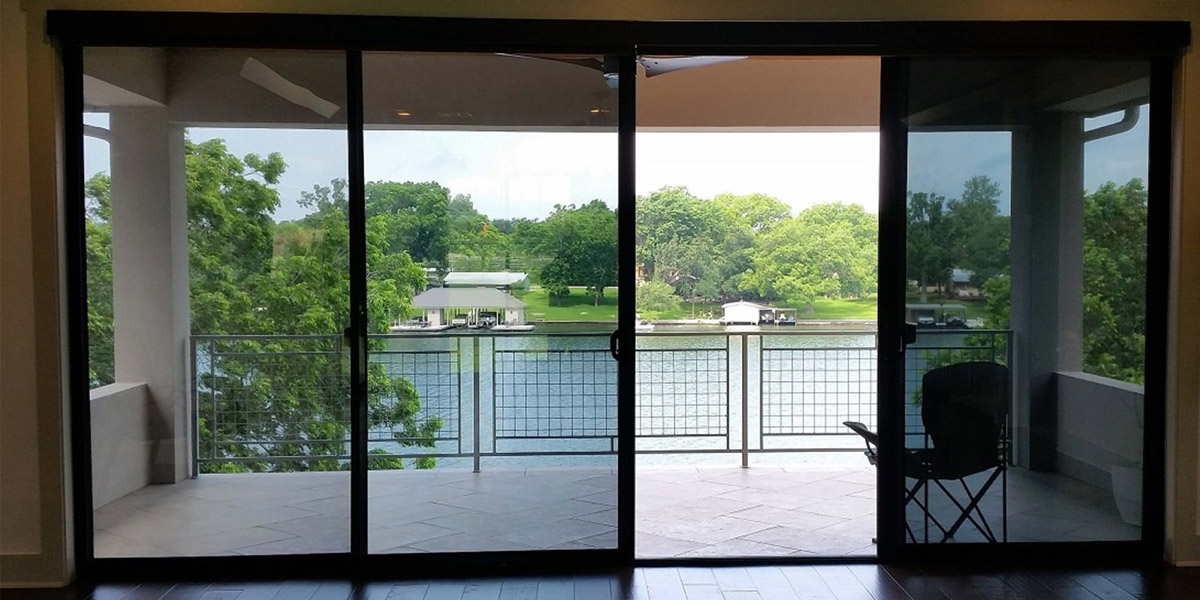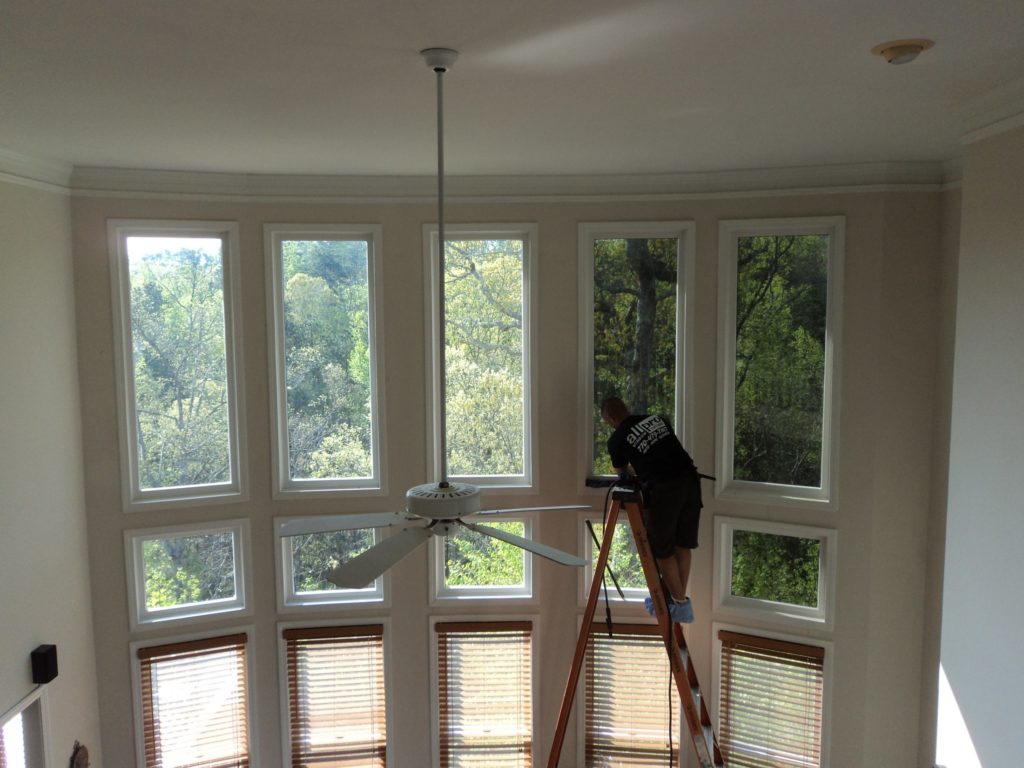Residential Window Tint for Big Windows: Preserve Comfort and Style
Residential Window Tint for Big Windows: Preserve Comfort and Style
Blog Article
Just How Residential Window Tinting Enhances Your Home's Energy Performance
Residential window tinting provides a compelling option for house owners looking for to enhance power performance within their space. By applying specialized films to home windows, it efficiently minimizes heat transfer, thereby maintaining interior temperature levels and lessening the requirement for excessive heating or air conditioning. This not just reduces power consumption yet additionally supplies a more comfortable setting by minimizing glow. Nonetheless, understanding the subtleties of how tinting jobs and picking the appropriate type for your home can be critical. Curiously, what elements should one consider prior to making this investment?
Understanding Window Tinting
Comprehending home window tinting is important for home owners seeking to enhance both convenience and power efficiency in their living spaces. Residential Window Tint. Window tinting involves the application of a thin movie to the interior or exterior surface of glass windows. This movie can significantly regulate the quantity of sunlight and warm that gets in a home, thus influencing indoor environment problems
There are numerous kinds of home window tinting films available, each with distinctive homes. For circumstances, dyed films soak up solar power, while reflective movies deflect it far from the glass surface area. Ceramic movies provide a balance of exposure and warmth rejection, making them a prominent choice amongst house owners. The effectiveness of home window tinting is typically gauged by its Visible Light Transmission (VLT) percent, which suggests just how much light can pass with the movie.
Benefits of Power Performance
Window tinting not only enhances appearances but likewise plays a considerable function in boosting power effectiveness within residential rooms. By lowering warm transfer through home windows, colored movies produce an extra steady indoor environment, which can bring about significant reductions in power consumption for heating & cooling. This power effectiveness translates right into lower energy expenses, providing house owners with considerable lasting cost savings.

Additionally, window tinting enhances the comfort of living rooms. By reducing glare and blocking dangerous UV rays, tinted home windows create an even more pleasurable atmosphere, which can bring about improved well-being for residents. The protection versus UV rays additionally aids protect furnishings and flooring from fading, contributing to the long life of house things.
How Tinting Works
Tinting films run via a mix of sophisticated products and modern technologies created to manage the amount of solar power going into a home. Largely composed of polyester, these movies frequently include metallic or ceramic particles that show and take in warm. This dual capability permits them to dramatically minimize the infiltration of ultraviolet (UV) rays and infrared radiation while allowing visible light to go through.
The effectiveness of window tinting is measured by its solar warmth gain coefficient (SHGC), which indicates just how much solar power is transmitted through the home window. Reduced SHGC worths are more suitable as they represent greater warm being rejected. Additionally, home window colors can include a range of shades, permitting property owners to customize their visual preferences while enhancing energy effectiveness.
Additionally, these films act as a barrier, preventing warmth loss during cooler months by mirroring indoor heat back right into the living area. This thermal insulation effect complements the cooling benefits acquired throughout warmer months, adding to a well balanced indoor climate year-round. By handling solar power successfully, household window tinting not just boosts convenience however likewise plays get more an important duty in minimizing power usage and reducing utility costs.
Choosing the Right Tint

There are different types of home window films offered, consisting of dyed, metalized, and ceramic. Ceramic movies give exceptional warmth control without jeopardizing visibility and are highly resilient, making them a prominent selection.
Noticeable light transmission (VLT) is another vital variable, as it shows the amount of natural light that can go through check here the tinted glass. Property owners ought to select a tint with a VLT that complements their lighting choices while still providing adequate glow decrease.
In addition, examining the solar warmth gain coefficient (SHGC) can help establish just how well a tint can obstruct warmth from sunlight. A reduced SHGC suggests much better warmth control, eventually enhancing energy efficiency.
Installment and Maintenance Tips
Correct setup and maintenance are crucial components in maximizing the advantages of property window tinting. Specialists also utilize specialized devices and strategies, which can improve the longevity and performance of the tint.
Complying with installment, upkeep is vital to extend the life of the window film. It is suggested to wait at the very least 1 month before cleansing the tinted home windows to enable the sticky to heal fully. When cleaning, utilize a soft towel and a mild, ammonia-free cleaner to avoid harming the movie. Avoid abrasive products that can damage the surface.
In addition, regular inspections are beneficial. Look for any peeling or bubbling, which might suggest incorrect installation or put on in time - Residential Window Tint. Attending to these concerns promptly can avoid additional damages and preserve power performance. By sticking to these installation and maintenance ideas, house owners can guarantee their home window tinting remains to offer considerable power savings and comfort for many years ahead.
Conclusion
In final thought, residential window tinting serves as an effective solution for boosting energy performance within homes. By minimizing heat transfer and obstructing damaging UV rays, window movies contribute to reduce energy consumption and improved indoor convenience.
Home window tinting entails the application of learn this here now a thin film to the interior or exterior surface of glass windows. By reducing warmth transfer via home windows, colored movies develop an extra steady interior climate, which can lead to substantial decreases in energy intake for home heating and air conditioning.The effectiveness of home window tinting is gauged by its solar heat gain coefficient (SHGC), which shows how much solar power is transferred with the window. By managing solar power properly, domestic home window tinting not just improves convenience yet also plays an important function in decreasing energy intake and lowering energy bills.
By lowering warmth transfer and obstructing dangerous UV rays, window films add to lower power usage and enhanced interior comfort.
Report this page